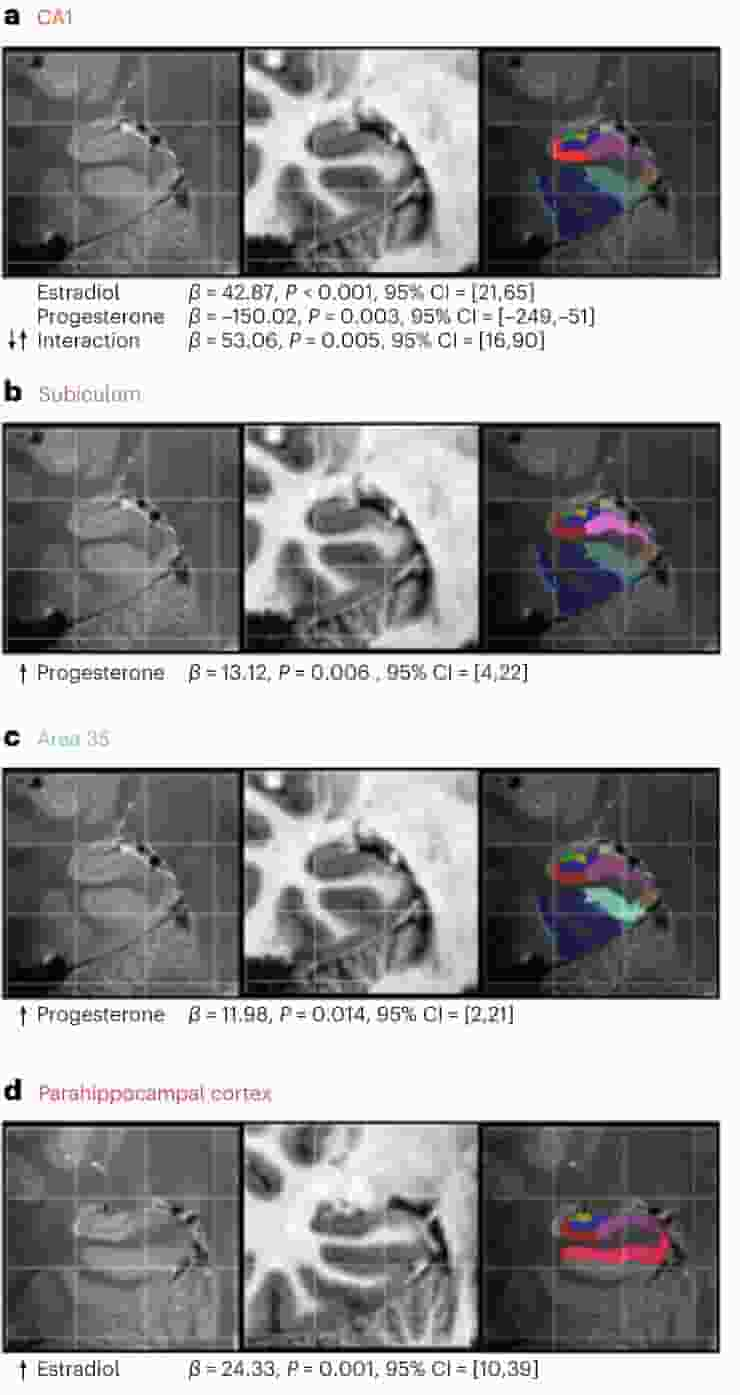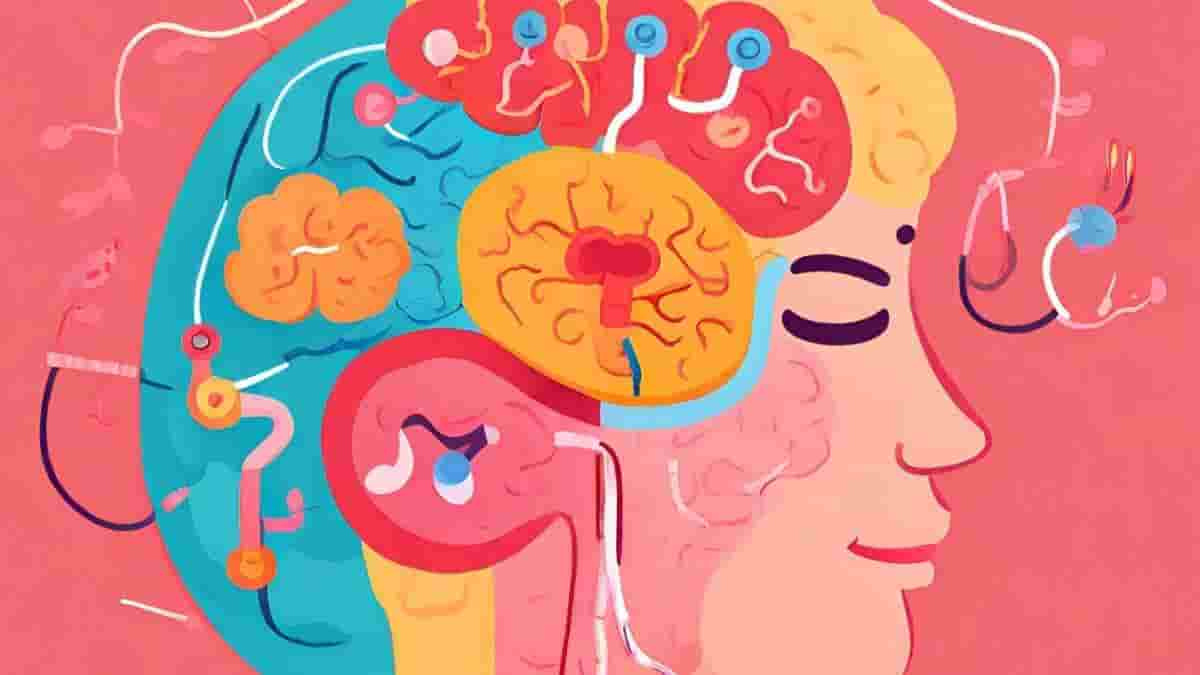Sex hormones cause changes in central learning and memory hubs, a new study has found. Rachel Zsido and Julia Sacher of the Max Planck Institute for Human Cognitive and Brain Sciences and the University Clinic in Leipzig, Germany, published the study that links rhythmic oscillations in ovarian hormone levels in women during the menstrual cycle to changes in brain structure.
Ovarian hormones have significant effects on the brain, and early menopause may be associated with an increased risk of accelerated brain aging and dementia later in life. The consequences of ovarian hormone changes on brain shape earlier in life, on the other hand, are less well characterized.
Zsido and Sacher’s latest study demonstrates that ovarian hormone variations alter structural plasticity in critical brain regions over the reproductive years.
Monitoring Follicle Growth
163 participants were screened, out of whom 41 were enrolled in this neuroimaging study. Four were excluded on account of irregular cycles, irregularities in bloodwork, or emergency contraceptive pill use after enrollment. Two were excluded for inability to tolerate the 7-T MRI scan, and eight voluntarily discontinued due to the time demands of the study.

CA1 (a), subiculum (b), perirhinal area 35 (c) and parahippocampal cortex (d).
Credit: Nat. Mental Health 1, 761–771 (2023). doi: 10.1038/s44220-023-00125-w
The researchers procured blood samples from 27 female subjects of the study. They employed ultra-high field 7 Tesla MRI to zoom in on subregions of the medial temporal lobe and hippocampus, and utilized ultrasound to monitor follicle growth in the ovaries in order to precisely time ovulation.
That’s because these regions are dense with sex hormone receptors and are critical for cognitive function, such as episodic memory.
Unlike previous studies, Zsido and Sacher examined female brains not just at one point in time but at six points across the menstrual cycle. The longitudinal nature of this study design allows for the examination of the dynamic fluctuations in sex hormones.
For instance, progesterone predominates in the second half of the menstrual cycle, whereas estradiol increases during the first half and reaches its peak around ovulation.
Dynamic Hormone Changes
Estradiol is one of the most important sex hormones in the female body and is instrumental in maintaining the reproductive system. Progesterone, an additional essential sex hormone for the reproductive system, has the capacity to relax and calm the body, induce sleep, and relieve anxiety while also preparing the uterus for pregnancy.
So, much like the ebb and flow of the tide, the female brain is attuned to a constant rhythm of hormones, which this research study maps for the first time.
“We were able to determine that certain medial temporal lobe regions, which are crucial for episodic memory and spatial cognition, expand under high estradiol and low progesterone levels — that is, these brain areas remodel themselves in synchronization with the menstrual cycle. We want to clarify whether these rhythmic changes are altered in individuals at risk for memory and affective disorders in several follow-up studies,”
said Julia Sacher.
In general, the female brain has received far too little attention in cognitive neuroscience. Sex steroid hormones are potent modulators of learning and memory.
But hormonal transition phases such as the menstrual cycle the influence of hormonal contraceptives, pregnancy, and menopause are covered in less than 0.5% of the neuroimaging literature.
“We are committed to addressing this fundamental research gap. To identify the mechanisms underlying risk and resilience to mental health disorders, such as depression or Alzheimer’s disease, we need a deeper understanding of how the healthy female brain adapts to change,
Sacher added.
Abstract
Ovarian hormones have substantial effects on the brain, and early menopause has been associated with increased risk of accelerated brain aging and dementia later in life. However, the impact of ovarian hormone fluctuations on brain structure earlier in life is less understood. Here we show that ovarian hormone fluctuations shape structural brain plasticity during the reproductive years. We use longitudinal ultra-high field neuroimaging across the menstrual cycle to map the morphology of medial temporal lobe subregions in 27 participants. Controlling for water content and blood flow, our findings reveal positive associations between estradiol and parahippocampal cortex volume, progesterone and subiculum and perirhinal area 35 volumes, and an estradiol*progesterone interaction with CA1 volume. This research offers a blueprint for future studies on the shared dynamics of the brain and ovarian function and a fundamental stepping stone towards developing sex-specific strategies to improve brain health and mental health.
Reference:
- Zsido, R.G., Williams, A.N., Barth, C. et al. Ultra-high-field 7T MRI reveals changes in human medial temporal lobe volume in female adults during menstrual cycle. Nat. Mental Health 1, 761–771 (2023). doi: 10.1038/s44220-023-00125-w
